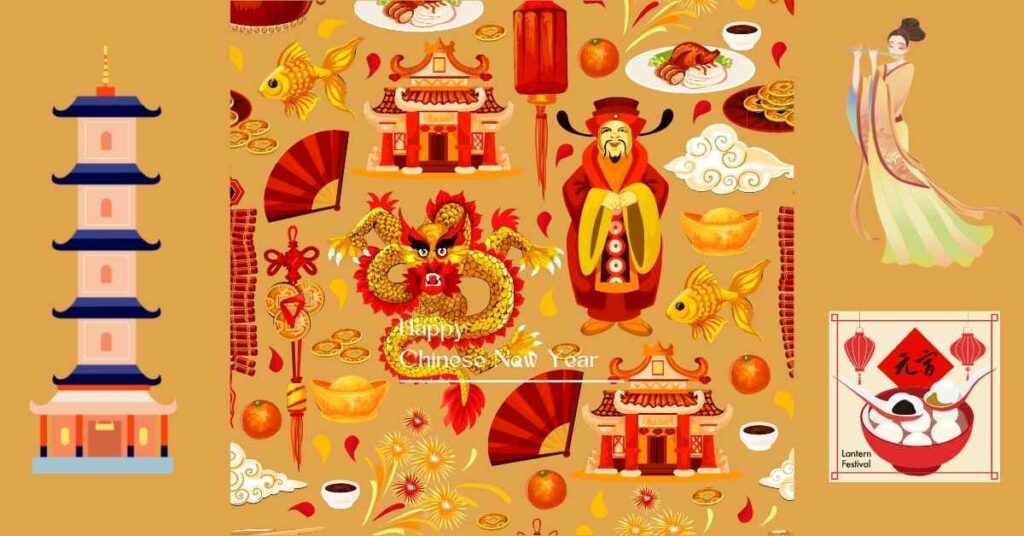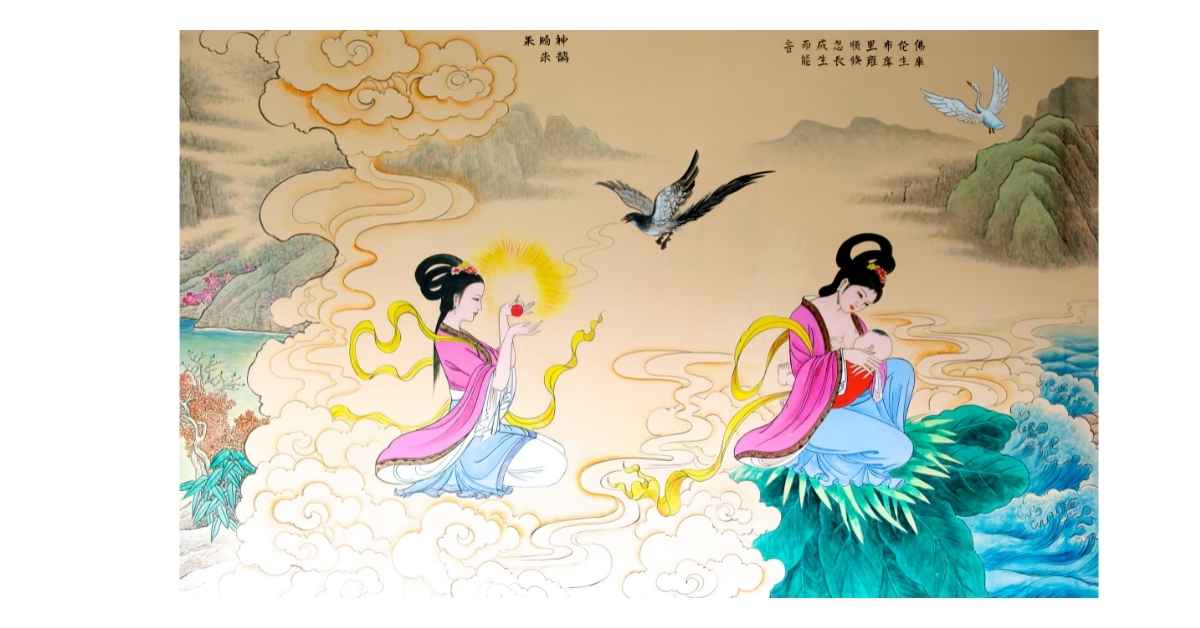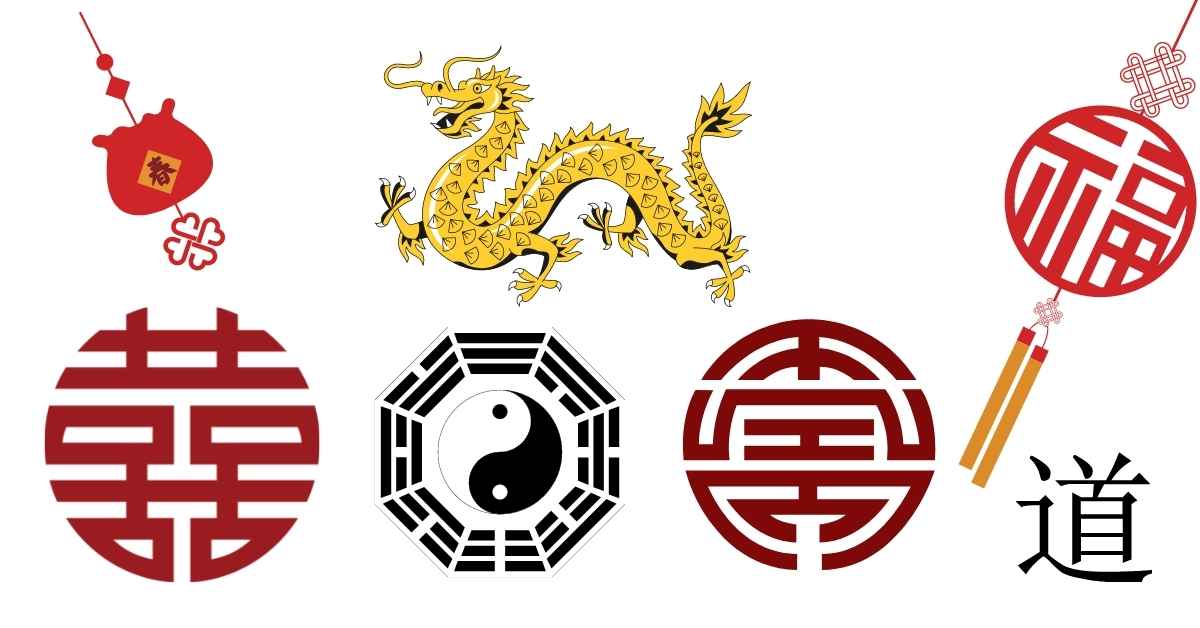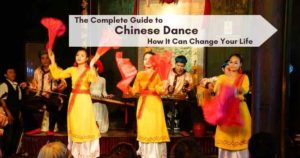China is a vast and diverse country with a culture that dates back to thousands of years. From ancient temples & palaces to spectacular megacities, there is lots to explore in China. The vast territory (3.6 million square miles) treasures beautiful landscapes and diverse cultures, all united by Chinese traditions.
Table of Contents
Traditional Chinese culture introduction
Knowing all about traditional Chinese culture, customs and traditions can help you gel well with people if you are visiting China, or simply want to know more about its rich historical heritage.
In this guide of traditional Chinese culture introduction, you will learn about:
- Chinese traditions
- Chinese heritage and spiritual values
- Chinese arts
- Festivals
- Chinese symbols and more!
Chinese Traditions
Traditions in China vary by region. Some of these traditions are very ancient, while others are relatively new. Given that these traditions give a unique insight into the local culture in China, it is important that you know about them.
Bonus: Want to know more about Chinese culture? Click here to watch in-depth videos which summarize the grandeur of Chinese culture.
Dress Code
Fashion trends in metropolitan cities in China are somewhat similar to its Western counterparts. However, showing too much skin is frowned upon. Dressing conservatively is important for travelers when visiting China.
This means avoiding clothing that is revealing or offensive. Women should avoid wearing short skirts or dresses with bare backs, and men should avoid wearing low-cut shorts.
Traditional outfits vary by region, but perhaps the most well-known Chinese outfit is ‘Hanfu’. This garment is based on the clothing worn during the Han dynasty. It is a long, loose-fitting robe that is fastened at the front with a button or tie. The sleeves of the garment are long and wide, and the hem usually falls to the ground.
Red Hanfu dresses are typically worn for weddings while white is for funerals. Men on the other hand, wear the ‘Tang’ suit, which is another garment which can be fastened at the front with buttons.
Food
Chinese are known for eating with chopsticks, which might be difficult for westerners. This helps them eat at a slower pace and promotes healthy digestion.
Another tradition is the use of bowls and plates. They are placed on a table next to the person eating. They can be brought to the mouth or picked up, it is considered rude to eat by bending over the table.
It is also customary to share food. This means that food is served family-style, with everyone taking from the same dish. It is considered impolite to take more than you can eat.
Some traditional Chinese dishes include Kung Pao, sweet and sour pork, egg rolls, etc. The most popular foods in China are:
- Rice
- Seafood
- Noodles
- Steamed vegetables
Family Traditions
Family is the cornerstone of Chinese society. Confucianism, which is a system of values and principles that govern social order, places great importance on filial piety. This means that children are expected to respect and obey their parents. They are also expected to take care of their parents in old age.

Here is a small list of popular family celebrations in China:
Chinese New Year the beginning of the lunar year This is the most important holiday in China. It is a time for families to be together and celebrate the start of the lunar new year. Families will often have a big meal, exchange gifts, and decorate their homes with red lanterns and other festive items. Qingming Festival April 5 This day is all about remembering and honoring ancestors. Families visit the graves of their ancestors and make offerings. Dragon Boat Festival 5th day of the 5th month of the lunar year This is a holiday that celebrates family unity. Families often race dragon boats and eat traditional foods, such as zongzi (rice dumplings). Mid-Autumn Festival 15th day of 8th month of the lunar year This holiday is spent with loved ones. People often have a big feast and share mooncakes on this day.
Did you know? China uses a lunisolar calendar as opposed to the conventional Gregorian calendar. Click here to convert any date into its lunar form from a Gregorian calendar.
Language
China has seven official dialects along with other dialects that are spoken in minority groups throughout China.
- Mandarin: This is the most common language spoken in China. It is the official language of the country and is used by the majority of the population.
- Cantonese: Spoken in the southern part of the country, including Guangdong Province and Hong Kong.
- Shanghainese: Spoken in Shanghai and its surrounding areas.
- Hakka: Used by Hakka people, spread across several provinces in southern China.
- Min Nan: This Chinese dialect is spoken in Fujian Province and Taiwan.
- Tibetan: This is the official language of Tibet.
- Uyghur: This is the official language of Xinjiang, which is a region in northwestern China.
Religions
There is no official religion in China, and people are free to practice whichever faith they choose. However, Buddhism is by far the most common religion, followed by Confucianism and Daoism. Christianity and Islam are also practiced by a small minority of the population.
There are five official religions:
- Buddhism: This is the most common religion in China, with around half of the population practicing some form of Buddhism.
- Daoism: This is a Chinese philosophy that emphasizes living in harmony with nature. It is often seen as a complement to Confucianism.
- Confucianism: This is an ethical and philosophical system that has a strong influence on Chinese society. It is not technically a religion, but it does have religious overtones.
- Christianity: This is a minority religion in China, but it is growing in popularity. There are an estimated 60 million Christians in the country.
- Islam: This is another minority religion in China, practiced by around 10 million people.
Chinese Etiquette
Despite the difference in diversity, most of the Chinese population goes by many common behavioral rituals. Here are some must-know etiquette rules:
Chinese Etiquette
- Table manners are important in China. It is considered impolite to slurp your soup, belch, or leave chopsticks sticking out of your bowl.
- It is common for people to greet each other with a handshake, a bow, or both. The level of formality will depend on the relationship between the two people.
- Avoid giving presents in black-and-white color, white flowers, and presents in number of 4. This represents death and funerals.
- People rarely split the bill in China. It is customary for the most senior person or whoever extended the invitation to pay.
- Chinese names are usually made up of three characters, with the family name coming first. It is considered impolite to address someone by their family name unless you are very close to them. Always use Mr. or Mrs.
why Chinese have bad manners
When Chinese leave China, their bad behavior often leaves them embarrassed. Many attribute Chinese tourists’ bad manners to a lack of proper breeding. But that’s not the case….
Chinese Heritage
China is a country with a long and rich history. Being one of the most powerful empires in the world, its culture has had a significant influence on the development of East Asia.
The Chinese civilization is one of the oldest in the world, with a history that stretches back over 5000 years. The country has been through many different periods of time, each of which has left its mark on Chinese culture. From the ancient dynasties to the Communist Revolution, China has always been a country with a strong sense of its own identity.
Famous Architecture
Chinese architects have always been innovators, experimenting with new materials and construction techniques.
One of the most distinctive features of Chinese architecture is its use of timber. Chinese carpenters are masters of their craft, and they have developed a unique way of using timber that is different from any other architectural tradition. Timber framed buildings are common in China, and they are often decorated with intricate carvings and paintings.
Another feature of Chinese architecture is the use of courtyards. Courtyards are a common feature of Chinese houses, and they provide a space for people to relax and enjoy the garden.
Some of the most famous landmarks in China are:
- Grand Buddha of Leshan
- Great Wall of China
- Temple of Heaven
- The Forbidden City
- Tiananmen Square
- Summer Palace
Ethnic Groups
There are more than 50 minority ethnic groups living in China alongside Han Chinese, who constitute about 90% of the total population. Other minorities include:
- Mongolians: Known for conquering Eurasia
- Zhuang: Largest ethnic group
- Hui: Chinese Muslims living in Ningxia Hui
- Miao: Known for their unique art and culture
- Uyghur: They come from Xinjiang and are known for their ‘Lanzhou noodles’
- Tibetans: Once ruled the mountains of southwest China
- Yao: Popular for their rice terraces
- Naxi: They live in the city of Lijiang
- Dong: Famous for Lusheng music and architecture
- Manchu: Descendents of Mongols and Manchus
Chinese Arts
Given China’s 5,000 long history, there are plenty of performing arts to learn about. From martial arts like Kung Fu that characterize the early tribes that inhabited the country, to folk music and dance forms- Chinese performing arts drew on the traditions of many groups to develop new forms of entertainment that reflected the evolving culture of the country.
Chinese Kung Fu
Kung Fu is not only a form of self defense, but it is also seen as a way to develop discipline, strength, and character. Kung fu practitioners often follow a strict code of conduct, and they strive to perfect their techniques.
Kung fu became popular in the West after Bruce Lee, a famous Kung Fu movie star, demonstrated his skills in movies and on television. Kung Fu has since been featured in many movies and TV shows, making it one of the most popular martial arts styles in the world.
Chinese Folk Dances
Two popular varieties of Chinese folk dances are Lion Dance and Dragon dance. Locals like to present these forms during festivals like Lunar New Year Festival. Places where you can find some of the best ritual dances in China include Yunnan, Guizhou, and Tibet.
Chinese classical dances are either based upon the warrior exercises of ancient Chinese warriors or Confucian ritual dances. Portrayals of dancers performing temple ceremonies can be found on structures from the Qin Dynasty of 220BC. Each oncoming dynasty added its own flare and turned Chinese classical dance to what it is today.
Shen Yun is one such classical dance which uncovers ancient Chinese wisdom and sheds light on China’s marvelous history. Click here to know more!
Chinese Classical Instruments
Chinese classical music is a rich and diverse tradition with a wide range of instruments that are used in various ways. Bowed string instruments are quite common. These include Erhu, Zhonghu, and Gehu which are particularly popular in folk music.

Wind instruments are also common in Chinese classical music. The Dizi is a flute-like instrument that is often used for its mellow sound, while the Xiao is a type of flute that has a more piercing tone. Lastly, Suona is a trumpet-like instrument that produces a loud, brassy sound.
Chinese Traditional Operas
Chinese traditional opera, also called Beijing opera, is a form of Chinese theater which combines music, vocal performance, mimes, dance and acrobatics. Although it has its roots in various folk traditions, it frequently draws on Chinese mythology and history for its plot and storylines.
Beijing opera is most commonly performed in Beijing, but is also popular in other areas of China such as Shandong and Henan. It is one of the cultural treasures of China and has been included in UNESCO’s Intangible Cultural Heritage list since 2010.
Chinese Symbols
Whether you are fascinated by the beautiful and intricate characters that make up the Chinese writing system or want to appreciate the depth and beauty of the local language, knowing a few Chinese symbols is surely a good start! And who knows? Once you start learning about Chinese symbols, you may find yourself inspired to learn more about the language. Some popular Chinese symbols are:
- Fu (福): Good fortune, happiness, prosperity
- Shou (寿): Longevity, long life
- Xi (喜): Joy, happiness
- Cai (财): Wealth, money
- Li (力): Strength, power
- Jing (精): Essence, energy
- Sheng (生): Birth, life
- Zhen (真): Truth, reality
- Yue (月): Moon, month
- Dao (道): Way, path
| The Taiji Symbol | Tai Ji is an important symbol in China for a number of reasons. Firstly, it represents the balance of yin and yang – two opposite yet complementary forces that make up the universe. This symbolizes the importance of balance in all aspects of life, something that is highly valued in Chinese culture.
Secondly, Tai Ji is a reminder that everything is interconnected. Just as the two sides of the Tai Ji symbol are joined together, so too are all things in the universe connected to one another. This teaches us that we must always be mindful of how our actions can impact others and the world around us. Lastly, Tai Ji represents the never-ending cycle of change and transformation that is at the heart of nature. |
| Dragon’ Significance in China | To the Chinese people, the dragon represents strength, power, and good luck. It is also seen as a symbol of wisdom, prosperity, and success.
In Chinese mythology, the dragon is often associated with the weather and is said to be able to control the rain and bring about storms. For this reason, the dragon is seen as a force of nature that must be respected and treated with caution. In recent years, the dragon has become increasingly popular as a national symbol of China. Thus, it can often be seen on flags, coins, and other official government documents. |
Outro
China is a country with a rich history and unique customs. From the language to the dress code, there are many things that set Chinese culture apart from others around the world. If you’re looking for an unforgettable travel destination, China should be at the top of your list!
The food is fantastic, the people are friendly and there’s so much to see and do. And although the language can seem daunting, learning a few key phrases will help make your trip even more enjoyable. So pack your bags, brush up on your chopsticks skills and get ready for an adventure of a lifetime!
Thanks for reading!
Frequently Asked Questions
Resources
- https://www.chinahighlights.com/travelguide/culture/classical-instruments.htm
- https://www.discoverwalks.com/blog/china/ten-most-famous-chinese-architects/
- https://www.chinahighlights.com/travelguide/nationality/
- https://www.getty.edu/publications/heritagemanagement/part-two/7/
- https://www.chinatravel.com/culture
- https://www.vogue.com/article/chinese-etiquette-rules-being-polite-china
- https://www.chineseclass101.com/blog/2020/01/06/chinese-etiquette/













